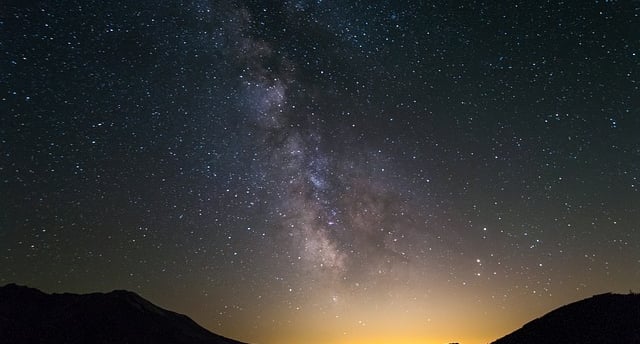Best Stargazing Spots: Top Tips for Every Sky Lover
Find the best stargazing spots around the world for breathtaking night skies, top places to see stars, and tips on timing for unforgettable celestial views.
admin
11/6/20244 min read


Stargazing transforms the night into a canvas of wonder. With stars glittering like diamonds, it offers a peaceful escape from the bustling world below. As more people seek a connection with nature, finding the best places to stargaze has never been more popular. Some locations offer skies so clear, they seem almost magical. Let’s visit these celestial wonders now.
Why Stargazing Is Worth the Journey
Stargazing is much more than a relaxing activity; it’s a portal into the mysteries of the universe. When you head out to some of the best places to see stars, you’re in for breathtaking sights of constellations, nebulae, and even the occasional comet. Unlike urban skies, where light pollution obscures many of the stars, remote stargazing spots provide crystal-clear views of the heavens.
Top Spots for Stargazing Around the World
From vast deserts to scenic mountains and protected dark sky reserves, some of the world’s best stargazing locations promise unforgettable experiences under a canopy of stars.
1. Mauna Kea, Hawaii, USA
Mauna Kea, a dormant volcano on the Big Island of Hawaii, is one of the best places for stargazing on Earth. Its high altitude, low humidity, and clear skies make it a prime location for observing the stars. As night falls, constellations, planets, and the Milky Way appear in spectacular detail.
Best Time for Stargazing: The best months are generally April through October, avoiding Hawaii’s rainy season.
What to Expect: With organized tours and the famous Mauna Kea Observatories, this site is ideal for both amateurs and serious stargazers.
2. Atacama Desert, Chile
The Atacama Desert is one of the driest places on Earth, which contributes to its incredibly clear skies. Known as the astronomical capital of the world, the Atacama provides stunning views of the Southern Hemisphere's night sky, including the Magellanic Clouds and various star clusters.
Best Time for Stargazing: April through September offers the clearest skies, but you can enjoy stargazing year-round.
What to Expect: Several observatories and stargazing tours cater to enthusiasts who want to see the night sky up close.
3. Jasper National Park, Alberta, Canada
Jasper National Park is designated as a Dark Sky Preserve by the Royal Astronomical Society of Canada. This remote area is known for its lack of light pollution, making it a dream destination for stargazers.
Best Time for Stargazing: September through March, especially during the Jasper Dark Sky Festival held every October.
What to Expect: Views of the Northern Lights, Milky Way, and meteor showers, plus a range of guided stargazing events.
4. Namib Desert, Namibia
Namibia’s Namib Desert offers some of the darkest skies on the planet. Far from city lights, this unique landscape makes for awe-inspiring night sky views, including the Southern Cross and other rare celestial sights.
Best Time for Stargazing: May to September, during Namibia’s dry winter season.
What to Expect: Campsites with telescopes, guides, and tours under some of the world’s clearest skies.
5. Aoraki Mackenzie, New Zealand
This UNESCO Dark Sky Reserve in New Zealand is one of the best places to see stars in the Southern Hemisphere. Known for the clarity of its night sky, the reserve provides excellent views of constellations, planets, and even galaxies with the naked eye.
Best Time for Stargazing: Winter months (June to August) offer the darkest, clearest skies.
What to Expect: Observatory tours, as well as self-guided stargazing spots in a pristine natural environment.
6. Death Valley National Park, California, USA
Death Valley’s remote location and low population density make it one of the best stargazing places in the United States. Here, the dry climate, high altitude, and dark skies reveal stars with incredible clarity.
Best Time for Stargazing: November to March, as temperatures are cooler, making it easier to stay outdoors.
What to Expect: Designated stargazing areas, ranger programs, and even stargazing apps to enhance your experience.
7. Tenerife, Canary Islands, Spain
The Canary Islands offer some of the clearest skies in Europe, and Tenerife’s Teide National Park is among the best locations. Due to strict light pollution controls, this stargazing hotspot lets visitors experience constellations and celestial bodies that are typically obscured by artificial light.
Best Time for Stargazing: Spring and autumn months, avoiding the peak summer tourist season.
What to Expect: Local tours, observatory visits, and clear night skies framed by volcanic landscapes.
Tips for Stargazing Success
Planning a stargazing trip takes a bit more than heading outside and looking up. Here’s how to ensure you make the most of these best stargazing places:
Choose the Right Time: While stargazing can be enjoyed year-round, some months provide better visibility due to weather conditions and celestial events. Research the best time for stargazing at your chosen location.
Bring Proper Equipment: A telescope or binoculars will enhance your view, especially if you want to see details of planets or distant stars. For beginners, many stargazing apps can guide you through the night sky.
Plan Around the Moon Cycle: A bright moon can obscure the stars, so for optimal stargazing, plan your trip around a new moon for the darkest skies.
Pack Smartly: Stargazing often involves staying out late and sometimes in remote locations, so be prepared with warm clothing, snacks, and a comfortable blanket or chair.
Consider Guided Tours: Especially for popular stargazing locations, tours offer a lot of value, as guides can point out significant stars, and constellations, and even help you set up equipment.
Why Timing Matters: Best Time for Stargazing
Knowing the best time for stargazing is crucial to getting an incredible view. Generally, winter months offer longer nights, which means more time for stargazing. However, certain destinations have unique seasons with clearer skies, and some destinations offer the added spectacle of meteor showers or the Northern Lights.
Winter (Northern Hemisphere): Provides longer nights and generally clearer skies. Ideal for destinations like Jasper National Park and Death Valley.
Summer (Southern Hemisphere): Great for stargazing in places like New Zealand and Namibia.
Meteor Showers: Plan trips around events like the Perseid Meteor Shower in August or the Geminids in December.
Conclusion
From the volcanic peaks of Hawaii to the vast deserts of Namibia, the best places to see stars are spread across the globe, each offering unique sights and experiences. Whether you’re planning a night of relaxation under the stars or gearing up for some astrophotography, these locations provide the perfect setting to see the wonders of the night sky.
Stargazing isn’t just about looking up; it’s about connecting with the universe and finding beauty in its vastness. So grab your telescope, pack your bags, and head out to these breathtaking stargazing spots—you won’t be disappointed.
Explore
Discover
Luxury travel experiences and cultural adventures await you.
© 2024. All rights reserved.
